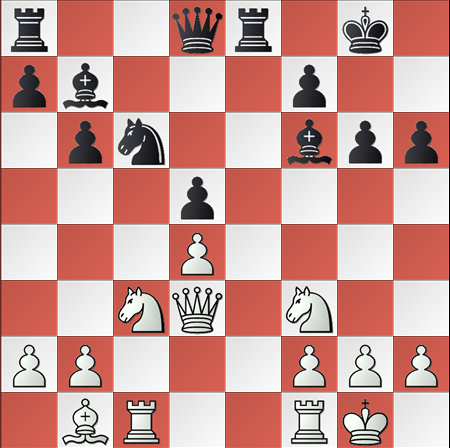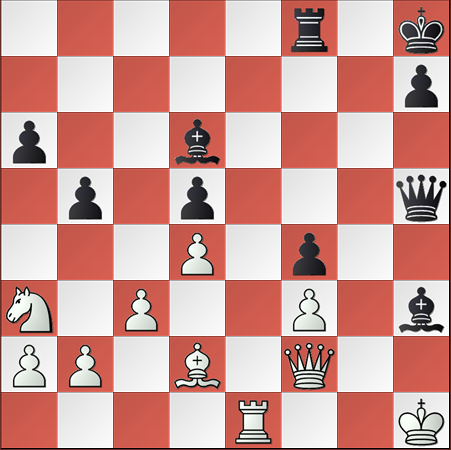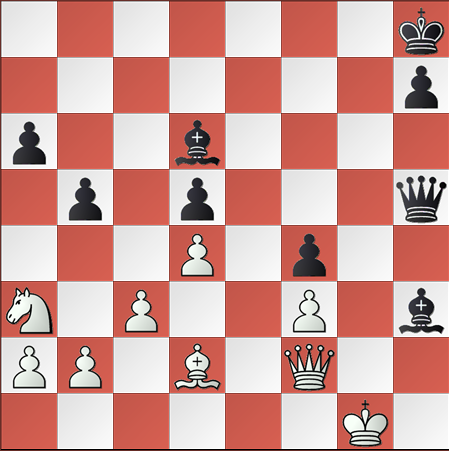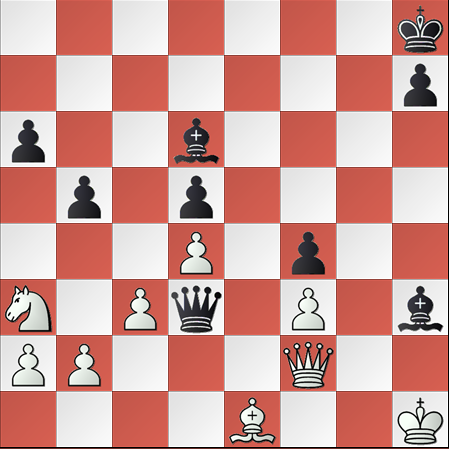Though no one has complained as yet, but in response to our article Chess Sacrifice as a Chess Tactics: recovering the investment with interest, one reader held that White (Schulten) simply played badly and another reader felt that the game was very old, implying rightly that modern players with White pieces would not play that way and fold up so easily!
Accepting their points, I would still like to bring out what Grandmasters almost a centuries later and of the stature of Mikhail Botvinnik and Nigel Short had to say about Morphy’s play and their comments were included in the article so that readers may not hasten to a judgment. A player like Bobby Fischer held that Morphy was probably the greatest of them all! We could certainly argue on Fisher’s views but there is no denying the fact that great players can make good players look average!
In any case, I accept that most of the illustrative games used in the articles so far belong to periods possibly half a century earlier or even before that. Why is this fascination with period pieces!?
The number of games played all over the world is increasing very fast thanks to online chess. Modern communication technology is making the moves and results available almost in real time, whether the chess play is over the board or online. With easy access to powerful computers and progressively more sophisticated software, almost anyone can dissect a game threadbare, what used to be the prerogatives of chess masters in earlier days! With so many analysts from Grandmasters to club players equipped with their PC and software, the openings have been analyzed to a depth where you can possibly rattle off the first dozen moves in any opening without even thinking! If anybody makes a mistake, it is because all people are not blessed with a computer-like memory! There may also be the tragedy of missing the forest in looking at the trees!
I sometimes wonder if it is tending to make modern games more stereo-typed (for want of a better word) and there is less to enthuse people the way Morphy games used to do 150 years earlier, or Marshall games 100 years earlier, or Tal games 50 years earlier…
You may argue that their games used to be flawed on many occasions, but can you deny the magic also that they produced by some electrifying moves? When you play through the games in Chess Sacrifice as a Chess Tactics: diverting opponent’s piece or Chess tactics: A move worth some gold pieces? or Chess Sacrifice as a Chess Tactics: gaining space for attack, do you think of the flaws or wonder at the way the victors conjured up their moves?
In one article, I expressed that according to experts, all brilliancies arise out of mistakes by one player. In fact, if both players played perfect chess as per the theoretical lines projected by analysis, what result would you expect from such games? And when you choose to play games from master level, what percentage of those do you take from drawn games? Quite low compared to the decisive ones, I am sure.
If I may use a simile, modern nutrition theory and health studies have analyzed all our food to such an extent that anyone caring about it knows for each food its calorie content, the chemicals it contains, their favorable/unfavorable effects, the risks of diseases we run and so on and so forth. But how much will you enjoy your food if you keep doing it for all your food? Conversely, do you think of these when enjoying your triple sundae? How many of us do not have weaknesses for ice-creams and chocolates in spite of knowing their flaws in respect of health-giving quality? If you stick to the guidelines, you will be in better health (!) probably, but I wonder how much enjoyment you will have left in that life.
Chess is a food for your mind and some analysis definitely helps us to understand complex positions. But over-analysis will surely create the same effect as I described for your favorite foods. I have another thought on game analysis which may appear controversial to many of you. It is my view that unless the players themselves annotate their games immediately afterwards, the analysis of moves that get published may not reflect the truth behind the logic of the moves when those were played. Except where a link can definitely be established between a previous and a later move (like Breyer’s 14th and 23rd moves in Chess Tactics: Well thought-out combinations), we can never be sure how much of the brilliant idea in a move owe itself to the player and how much to subsequent analysis! Also of relevance are our thoughts on chess logic and chess intuition.
Such may be the thoughts working in the unconscious mind of all those people like me who love to play and discuss the games that Morphy, Marshall, Tal and others of their ilk have left behind. Let us keep playing and enjoying and sometimes getting thrilled! In future, we may only be getting more and more drawn games.
We just produced some food for thought – how the reader takes it will depend on individual appetites! If your curiosity is aroused regarding the truth of the matter, you may like to compare between the periods say 1950-1959 and 2000-2009 regarding the percentage of drawn games in total games played. Or a similar comparison for the games from the World Champions of say 1905, 1955 and 2005. I do not mind getting corrected. Any takers to find and share with us?
To save this article from boring you to death, given below is a game from 1925 played at Debrecen (Hungary) between David Przepiorka and Lajos Steiner who even in their times were not among the notables. Just play it and think what I said.
David Przepiorka (1880-1940) was a Polish player of Jewish origin and became the Polish champion in 1926. He was executed by the nazis in a concentration camp. Though not well-known, he has to his credit victories over some more famous players like Teichmann, Tarrasch, Spielmann, Rubinstein, Nimzowitsch etc.
Lajos Steiner (1903-1975) was a Hungarian Champion in 1931 and 1936. He emigrated to Australia in 1939 and became Australian Champion a few times. He was awarded IM in 1950. Like his opponent, he had also scored victories over players like Tarrasch, Marshall, Tartakower, Gruenfeld, Nimzowitsch etc.
Watch the Game
httpv://www.youtube.com/watch?v=vfM2K8nnIgM
No one pointed it out, so we presume everyone missed a small error in the video! At the end, it says “Black Resigned” but if you have watched the video carefully, you will see that Black went all the way till he was checkmated!





